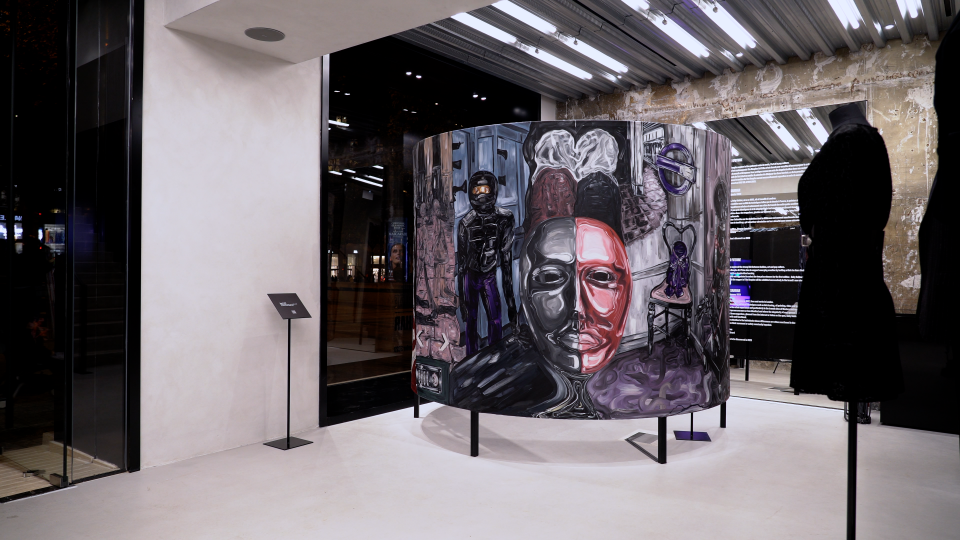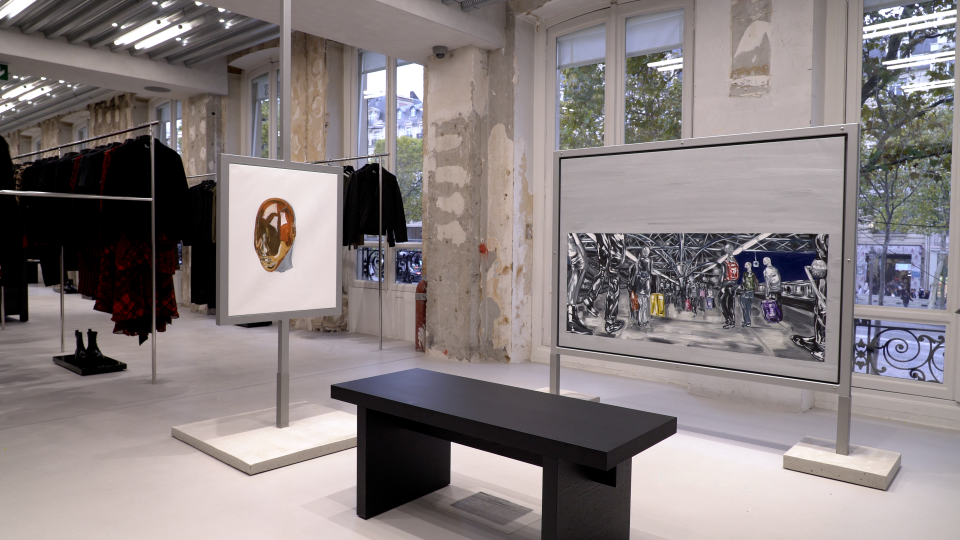The Kooples Opens Champs-Élysées Flagship, Launches Art Prize

PARIS — The Kooples has opened its new flagship with a roar, as well as a new art prize.
There’s a room entirely dedicated to leopard print, a signature this season, as the brand seeks to reinvigorate its collections under new creative director Capucine Safyurtlu.
More from WWD
It’s the latest move in the Champs-Élysées chess game, as the brand has taken over the former Lacoste space (the two share a parent company in Swiss owner MF Brands Group), which has moved across the avenue to what was formerly a JM Weston store.
The new 3,200-square-foot space houses not only the brand’s collections, but doubles as display space for the winners of its new art prize.
One of the two sweeping street-level windows will be dedicated to works from each season’s selected artists, and the second floor opens to a gallery space with additional pieces from the prize winners.
Inaugural artists are London-based Gaby Sahhar, whose paintings explore how queer identity, gender and sexuality interact with public space, and the Paris-based sculptor Kim Farkas, whose sculpture aims to critique capitalism and political power.
If it seems an anomaly that a brand billing itself as “accessible luxury” would dedicate precious selling space to artists that critique the very core of consumerism, it’s all part of the new approach from chief executive officer Marie Schott and Safyurtlu.
The two wanted to strip the brand back to the original aesthetic of its launch back in 2008, and integrate that into the architecture of the new store. “It was very, very simple — no marble at that time, with a lot of black — and we wanted to go back to these codes,” Schott told WWD.
Gone then is the wall-to-wall white marble that had become familiar, replaced with poured concrete and black-painted floors, aluminum ceilings and unfinished walls. Clothing hangs sparsely on sleek racks under rows of fluorescent tubes, adding a raw edge. Accessories have their own space on the second floor, with bags displayed on undulating steel shelves. The sparseness serves to center focus on the art, which dominates the first floor entrance and the second floor landing.
Sahhar’s work will be displayed through January, with Farkas taking over the spaces in February. Both will participate in a show through a first-of-its-kind partnership with the Val-de-Marne Museum of Contemporary art (MAC-VAL) just outside of Paris this summer. The brand plans two winners each year going forward.
The Kooples team brought on art partnership consultant Emily Marant and curator Thomas Conchou to work on the space, as well as a heavy hitting professional jury with panelists from the Vincent van Gogh Foundation and Montpellier Contemporain, among others, to select the winners.
The brand is putting its also money where its mouth is, with nearly 40,000 euros dedicated to the production and exhibition, 6,000 euro grants for each of the artists, a residency at Maison Artagon artists’ retreat, plus legal and communications training.
“This prize is basically radical philanthropy,” Sahhar said. “As the world is moving into a more right wing, more conservative direction and there’s more hate crime toward LGBTQ+ people, people from different ethnic backgrounds and people that don’t fit into the dominant structures in society, it becomes harder for artists like me just to show work.”

“It’s so hard just to start out as an artist; it can be quite delusional to be an artist actually,” he joked, citing cost and lack of visibility for emerging talents. “It’s really important for The Kooples to do something like this. When big brands reference youth culture or subculture, I think it’s a very transactional way of having that relationship. This is building a connection and actually ‘doing what it says on the tin.’ It isn’t just talking.”
Marant added that she was cautious when Schott first approached her. “She was trying to rethink everything about what The Kooples was. Instead of just commissioning an artist to do a big piece and put it at the center, I proposed that they could do something to support young artists and really participate in helping some careers develop,” she said. The team was independent to ensure that it wasn’t just a marketing exercise, she added.
Marant also noted that brands try to grasp at youth culture through advertising imagery, without trying to understand it. “Having somebody like Gaby that has a strong message on gender is super risk-taking,” she added.


